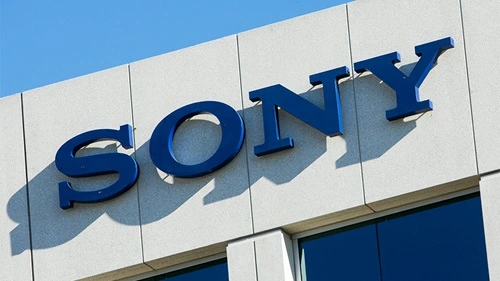Sony Corporation, a global leader in consumer electronics, gaming, and entertainment, was founded in 1946 and has grown into one of the most recognized brands worldwide. From the early days of producing radios and televisions to pioneering products like the PlayStation and leading in image sensors, Sony has maintained a reputation for innovation. By 2024, Sony continues to be a dominant player in multiple industries, from electronics to music, film, and financial services. However, rapid technological changes and rising competition require a careful assessment of the company’s position through a SWOT analysis.

Current Overview of Sony
Sony operates across a diverse range of industries, including consumer electronics, gaming, entertainment, and financial services. Sony’s PlayStation brand remains one of the most successful gaming platforms globally, while its image sensors are widely used in smartphones and other digital devices. The company’s entertainment arm, which includes Sony Pictures and Sony Music, gives it a strong presence in film and music production. However, Sony faces challenges, such as declining sales in certain electronics sectors, increased competition in the gaming industry, and the need for continuous technological innovation.
Strengths
1. Strong Brand Identity: Sony’s global brand is synonymous with innovation and quality. The company’s reputation for producing high-quality electronics, gaming consoles, and entertainment content has built a loyal customer base, making it a competitive force in its industries.
2. Diverse Portfolio: Sony operates across a wide range of industries, including gaming, electronics, entertainment, and financial services. This diversification allows the company to spread risk across different sectors and reduces dependence on any single business line.
3. Technological Innovation: Sony has a strong history of innovation, particularly in gaming, entertainment, and image sensors. It invests heavily in research and development, enabling it to remain competitive and introduce new products that meet consumer demands.
4. Leadership in Gaming: The PlayStation franchise is a major success, consistently generating significant revenue for Sony. PlayStation consoles, combined with a growing network of subscription-based services, contribute to the company’s dominance in the gaming sector.
5. High-Quality Products: Sony’s products, from televisions to cameras, are known for their reliability and premium quality. This has allowed Sony to command premium pricing, particularly in consumer electronics.
Weaknesses
1. Dependence on Electronics: Sony’s reliance on its electronics division, particularly in a rapidly changing market, exposes it to volatility. Declining sales in products like televisions and mobile devices have impacted overall profitability.
2. Weak Performance in Mobile Communications: Sony’s mobile division, particularly its Xperia smartphones, has struggled to compete with dominant players like Apple and Samsung, resulting in shrinking market share.
3. High Production Costs: The company’s focus on innovation and quality often leads to higher production costs, which can reduce profitability, especially in price-sensitive markets.
4. Vulnerability to Cyberattacks: As a major player in entertainment, electronics, and gaming, Sony has been a frequent target of cyberattacks, which pose a significant threat to its data security and reputation.
Opportunities
1. Expansion in Emerging Markets: Sony can expand its presence in emerging markets such as India, Southeast Asia, and Africa, where growing middle-class populations are driving demand for consumer electronics and entertainment products.
2. Growth in Gaming: The gaming industry continues to grow, particularly in areas like esports, virtual reality (VR), and mobile gaming. Sony is well-positioned to capitalize on these trends with its PlayStation brand and game development capabilities.
3. Artificial Intelligence (AI) and Internet of Things (IoT): The rise of AI and IoT presents opportunities for Sony to enhance its product offerings and create smarter, more connected devices. This can improve customer experiences and drive new revenue streams.
4. Expansion of Streaming Services: With a strong foothold in entertainment, Sony can further capitalize on the shift to streaming media. By expanding its existing services or developing new platforms, Sony can enhance its position in the digital content space.
Threats
1. Intense Competition: Sony faces significant competition across all sectors, particularly in consumer electronics, gaming, and entertainment. Competitors like Samsung, Apple, and Microsoft continue to innovate, putting pressure on Sony to maintain its market share.
2. Technological Disruption: The rapid pace of technological advancement can make it difficult for Sony to stay ahead. Emerging companies are producing competitive products at lower prices, which could erode Sony’s market position.
3. Economic Downturns: Recessions or economic downturns could affect consumer spending, particularly for Sony’s premium products, which are often seen as non-essential during tough economic times.Piracy and Counterfeiting: The threat of piracy, particularly in Sony’s entertainment and gaming segments, continues to be a challenge. Piracy can significantly reduce revenues from content and software sales.
Conclusion
Sony Corporation remains a dominant player across multiple industries, with strengths in brand recognition, technological innovation, and a diverse portfolio. However, the company must address key weaknesses, such as its reliance on the electronics sector and poor performance in the mobile market. Opportunities in gaming, emerging markets, and new technologies like AI and IoT offer potential for growth, but Sony must navigate significant threats from competitors, economic challenges, and cybersecurity risks. By focusing on innovation, expanding into new markets, and enhancing its digital offerings, Sony can maintain its competitive edge in 2024 and beyond.